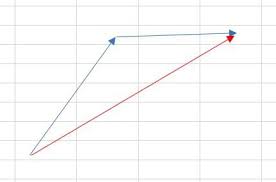What is the Resultant Force or Net Force Calculator? It is a tool that is capable of calculating the Resultant Force acting on an object. It can take care of three forces at the same time simultaneously.
Net Force Calculator
| Force | Unit | Angle | Angle Unit |
|---|---|---|---|
| Magnitude (N): | |||
| Direction (° / rad): | |||
The resultant force is a single force that can replace multiple forces acting on an object. It represents the combined effect of all the individual forces and summarizes their impact on the object’s motion. The resultant force provides information about the direction and magnitude of the overall force experienced by the object.

Key Points about the Resultant Force
- Vector Quantity: Like any force, the resultant force is a vector quantity, meaning it has both magnitude and direction. It is typically represented as an arrow pointing in the direction of the force with a length proportional to its magnitude.
- Balancing Forces: When multiple forces act on an object, they may either reinforce each other (add up) or oppose each other (cancel out). The resultant force takes into account the combination of these forces.
- Magnitude: The magnitude of the resultant force is determined using vector addition. This means you add up the magnitudes of all the individual forces, taking into account their directions.
- Direction: The direction of the resultant force is determined by the vector sum of the individual forces. It follows the rules of vector addition, such as the parallelogram law or the triangle law.
Mathematically, you can calculate the resultant force (R) using vector addition:
- For forces in two dimensions (e.g., x and y axes):
- R_x = F₁x + F₂x + F₃x + …
- R_y = F₁y + F₂y + F₃y + …
- R = √(R_x² + R_y²)
Understanding the resultant force is crucial in physics and engineering, especially in problems involving the equilibrium of objects, predicting motion, and analyzing the effects of multiple forces on an object. It allows us to simplify complex force systems and determine how they collectively affect an object’s behavior.
To calculate the net force on an object when multiple forces are acting on it, you can use vector addition. The net force is the vector sum of all the individual forces acting on the object. Each force has both magnitude (size) and direction.
Here are the steps to calculate the net force:
- Identify the Forces: Determine all the forces acting on the object. These forces can be gravitational, frictional, tension, applied forces, or any other forces relevant to the problem.
- Determine the Direction: For each force, determine its direction. You should use a coordinate system (e.g., x and y axes) to represent directions. Usually, you’ll use positive and negative directions along the axes.
- Break Forces into Components: If forces are not already given in terms of their components along the axes, you may need to break them down into their x and y components. This is done using trigonometry. For example, if you have a force F at an angle θ to the x-axis, you can find its x-component as Fx = F * cos(θ) and its y-component as Fy = F * sin(θ).
- Sum the Forces: Sum up all the x-components of the forces separately and all the y-components of the forces separately.
- Find Magnitude and Direction: The net force’s magnitude is the square root of the sum of the squares of its x and y components: Fnet = √(Fx^2 + Fy^2). The direction of the net force is the angle θ such that tan(θ) = (Fy / Fx).
- Sign Convention: Be careful with the sign conventions for forces along the axes. If a force points in the positive direction, consider it positive; if it points in the negative direction, consider it negative. This helps in determining the direction of the net force.
Example:
Suppose you have a 10 N force acting at 30 degrees above the positive x-axis and a 5 N force acting along the negative y-axis. To find the net force:
- The first force can be broken down into components as Fx = 10 N * cos(30°) = 8.66 N (approximately) in the x-direction and Fy = 10 N * sin(30°) = 5 N in the y-direction.
- The second force is already in components, so it’s -5 N in the y-direction.
- Summing the forces, you get Fx_net = 8.66 N and Fy_net = 5 N – 5 N = 0 N.
- The magnitude of the net force is Fnet = √(Fx_net^2 + Fy_net^2) = √((8.66 N)^2 + (0 N)^2) ≈ 8.66 N.
- The direction of the net force can be found using θ = arctan(Fy_net / Fx_net), which is arctan(0 / 8.66). Since tan(θ) = 0, θ is 0 degrees or along the positive x-axis.
So, in this example, the net force is approximately 8.66 N along the positive x-axis.
Read: Square Root Calculator